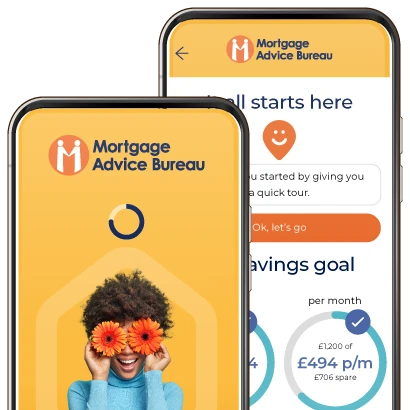If you’re a landlord or property investor, you might be familiar with the concept of buy-to-let mortgages. A buy-to-let mortgage allows you to purchase a property with the intention of letting it out to tenants. Over time, you might find yourself looking for an improved deal, and that's when remortgaging comes into play.
What are buy-to-let remortgage rates?
Remortgaging means switching your existing mortgage to a new one, either with the same lender or a different one. When you choose to remortgage your buy-to-let property, you’re essentially seeking a new deal that may offer improved interest rates and terms, which could potentially reduce your monthly repayments or allow you to release equity.
Interest-only or repayment mortgage?
Because the monthly expenses are lower and typically covered by the rental revenue, landlords frequently select interest-only buy-to-let mortgages to fund their investments. However, if you'd prefer, you can opt for a repayment buy-to-let mortgage. This is something your mortgage adviser will discuss with you.
Keep reading if you want to learn more about repayment style mortgages for buy-to-let, otherwise head on over to our other article, which discusses interest-only mortgages.
What affects buy-to-let remortgage rates?
There are a number of factors that affect buy-to-let interest rates and repayments when it comes to remortgaging. These rates are not fixed and can vary depending on a number of factors, including prevailing market conditions, the type of remortgage product you choose, and your financial history.
The financial market
The overall economic climate, the Bank of England's base rate, and the demand for buy-to-let mortgages all impact remortgage rates. In times of economic uncertainty or rising interest rates, you may find rates are higher.
Loan-to-value (LTV) and property value
The LTV ratio represents the percentage of your property's value that you wish to borrow. The lower the LTV ratio, the less risky the mortgage is for the lender, potentially leading to better rates.
The value of your property is a crucial factor. Higher-valued properties may attract better rates, especially when combined with a lower LTV ratio.
Credit history
As with any mortgage, your credit score plays a significant role. A strong credit history signals to lenders that you are a responsible borrower, likely resulting in competitive rates.
Variable and fixed rates
You can usually choose a fixed rate or variable rate remortgage. Fixed rate mortgages offer stable interest rates for a set period, while variable rates can fluctuate with market conditions, such as the Bank of England base rate.
Important information
Your home may be repossessed if you do not keep up repayments on your mortgage.
There may be a fee for mortgage advice. The actual amount you pay will depend on your circumstances. The fee is up to 1% but a typical fee is 0.3% of the amount borrowed.
You may have to pay an early repayment charge to your existing lender if you remortgage.
When should you remortgage your buy-to-let property?
For most, the decision to remortgage comes when their current mortgage deal ends (or six months beforehand). When mortgage deals end, lenders move you onto their standard variable rate (SVR). This is usually higher than your previous rate, as it’s decided by your lender.
Remortgaging is a great option if you are on a repayment mortgage and want to switch to an interest-only mortgage to maximise your profits as a landlord.
If you want to remortgage before your current deal ends, be aware that you may encounter early repayment charges (ERCs). If you want to avoid these charges, you may be able to lock in the new deal with your lender so that when your current deal ends, it switches to your new deal.
Do you need a deposit?
If you have built up a fair amount of equity in your property, you won’t need a deposit for your remortgage. Depending on the amount of equity you’ve built up over the course of your current deal, the LTV you get offered could be favourable. For example, if you’ve built up 30% equity in your property, you should get offered a 70% LTV remortgage deal.
Benefits of remortgaging a buy-to-let property
There are several advantages offered by remortgaging a buy-to-let:
Negotiate different terms
Choosing to remortgage gives you the opportunity to renegotiate the terms of your mortgage. This has the potential to secure you more favourable terms, such as a different type of deal. However, this is dependent on market conditions.
Equity release
If your property's value has increased since you purchased it, remortgaging can allow you to release some of the equity, providing funds for further investments or improvements. However, you will need to explain to your lender and adviser exactly what you are using the funds for.
Lower monthly payments
If you manage to secure a more promising interest rate through the remortgaging process, or have a significant amount of equity built up in the property, you could potentially lower your monthly payments through remortgaging.
Debt consolidation
If you have other debts, remortgaging can consolidate them into a single, more manageable monthly payment, increasing your balance and absorbing the debts into your mortgage.
Need more advice?
If you’re a landlord coming to the end of your current deal, understanding buy-to-let remortgage rates is vital. By taking note of the factors that affect remortgaging rates, you can make better decisions to improve your financial position and enhance your profits.
If you need more advice on finding appropriate remortgage deals, talk to one our expert mortgage advisers today. With access to 1,000s of deals, our advisers are sure to find the right deal for your circumstances.







